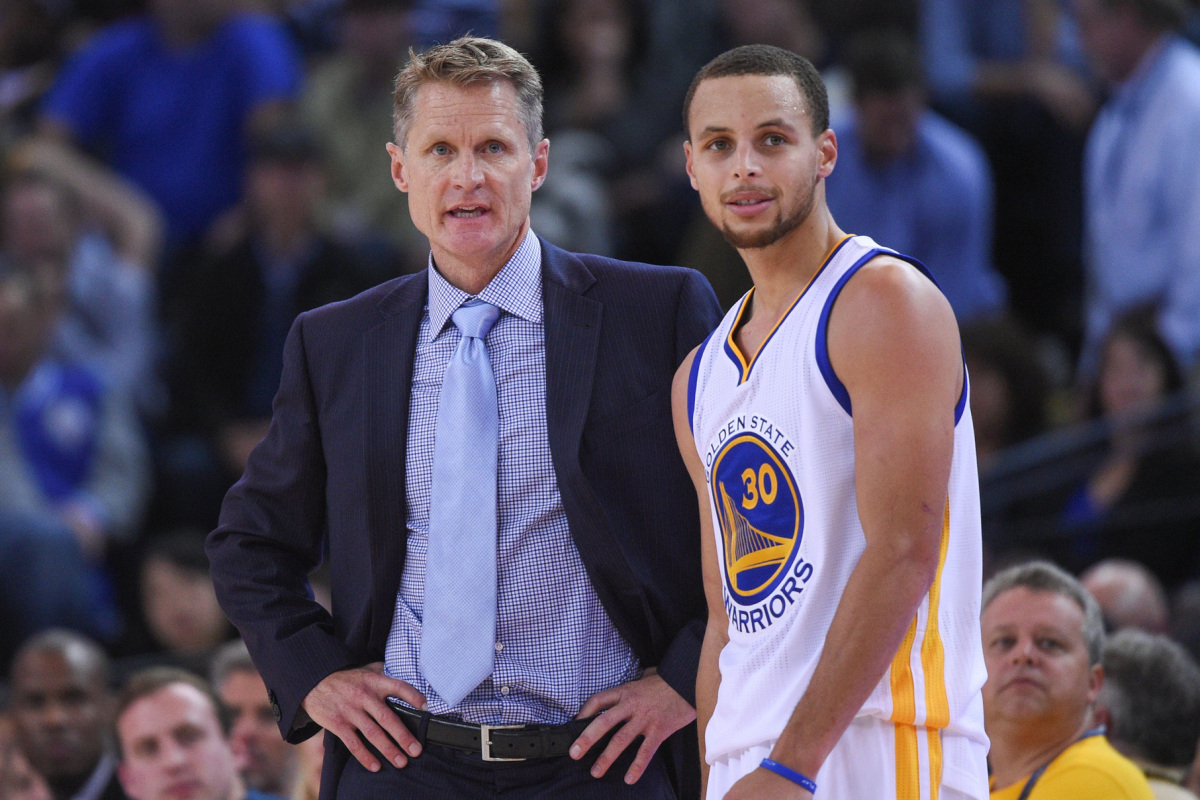05.08.17Carry On My Son: The Signal and the Noise in Coaching

Anthony Fowler my colleague at Uncommon Schools sent me a note this morning to pass along this great moment between Steve Kerr and Steph Curry.
“There’s something about him sharing the evidence (stats), and giving the positive reinforcement for him to keep going, even when it seems like he’s not performing his best,” Anthony wrote. A great coaching moment! It hit me the same way- for a couple of reasons.
There’s definitely something powerful about a coach building up a player–and helping him to see the full picture of the value he’s bringing–even when he thinks he’s struggling. Hearing “Carry on, my son” (literally or metaphorically) when you are in doubt earns loyalty (as long as the coach is right about carrying on) and can help a player settle down, not press, focus on doing what he knows how to do
Beyond the “carry on” message I think one of the biggest challenges of playing or learning a sport–or something in the classroom–is that whether the outcome of any series of events is positive does not necessarily correlate to whether execution or decision-making were correct. If you toss a coin that’s weighted to heads, it’s going to come up heads 75% of the time, say. But there will still be times when tails comes up more often for a short string of tosses. In other words, you can do everything right and events will still temporarily conspire against you, just as you can do everything wrong and still have things work out perfectly through no fault of your own. The coach’s job is to help the player see the signal and not the noise, to help him know to keep tossing. Because knowing what to keep doing is a big deal in learning.
So to some degree that’s also what’s happening here. Plus maybe Kerr is helping Curry see the full picture of the value he brings. What’s most measurable has a tendency to get most of our attention but it’s not the full story. Tacitly this is a coach telling his player what he values, what data he’s looking at. Either way I think this is a hidden and critical part of coaching: to help people know what is signal and what is noise.
I found myself trying to do this a lot with my kids when they were learning soccer. Down in the basement I’d toss them hard bouncing balls across the carpet while they tried to half volley into the crumbling sheet rock behind me (aka the goal). Sometimes one of them would take perfect adjustment steps, get their weight forward and over the ball as they struck it and land on their shooting foot, but getting all that right caused them to strike the ball an inch and a half too far to the left. Result: shank. To them it looked like a failure. To me it looked like success. The foot placement would come around. the body positioning- that was the thing that mattered. My job was to help them see that the visible result (shank) does not always correlate to the long term result (knowing how to half volley). Of course I didn’t have any of Kerr’s finesse at it so my messages were not nearly so successful but the principle was the same: one of the jobs of the coach is to help a player know what to replicate and what to persist with- to see the value that is not always readily apparent. Success is not always obvious. A million players do something right and stop trying to do more of it because they don’t see the full picture, they don’t even know how much they’ve done right.

Doug,
I am sorry you weren’t able to attend the What Drives Winning event in Boston on June 27th. I am hopeful our paths can cross soon. I have seen this clip several times, but I love the breakdown. I thought you would love this clip as well:
https://twitter.com/HJenkinsTTU/status/882721123519123456
Hi, Ryan. First, thanks for this video. It’s amazing- and the same in soccer. Most of what you do that adds value is done without the ball yet many players struggle to realize this- perhaps because coaches do too. Anyway, I really appreciated Coach Donovan’s points. I’m really disappointed I couldn’t make it on the 27th but, yes, let’s hope our paths cross soon!